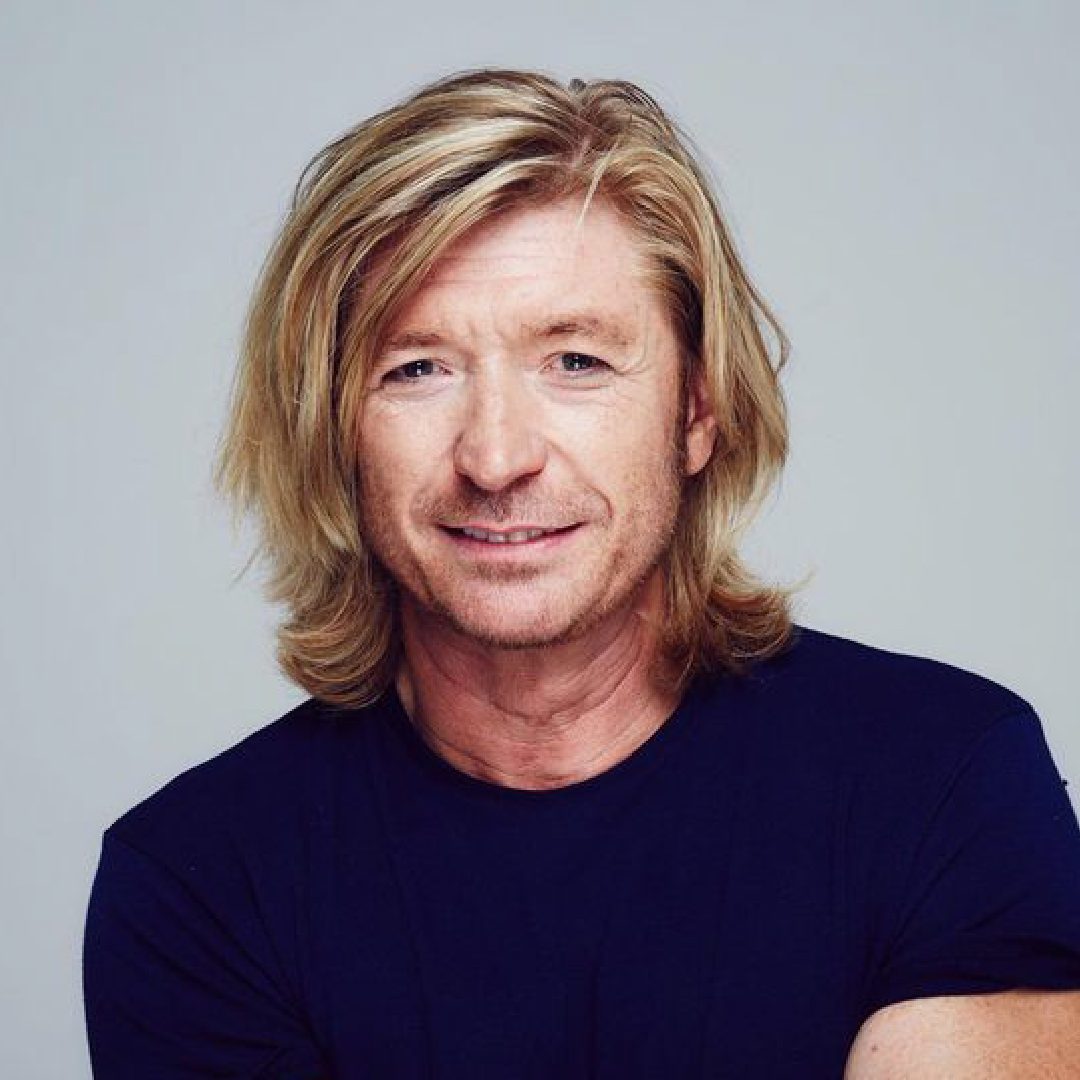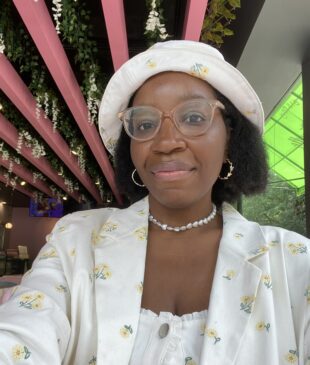Some of you might already be familiar with the hair legend that is Nicky Clarke, but for those of you who don’t yet know of his influence in the world of hair—allow us to get you acquainted. With over 40 years of experience working in the industry, Clarke boasts a storied career that encompasses everything from editorials, catwalks, television programs, and, most notably, celebrity styling. Decade after decade—beginning with the ‘70s, when he cut his teeth working in the salon and on set with the renowned John Frieda—the highly acclaimed British hairstylist has styled some of the most iconic haircuts for many of the world’s most famous faces. Considering that his massive star-studded clientele list spans everyone from Naomi Campbell and David Bowie to Donatella Versace, and even Princess Diana, you’d be hard-pressed to find a celebrity who’s hair he hasn’t gotten his skilled hands on.
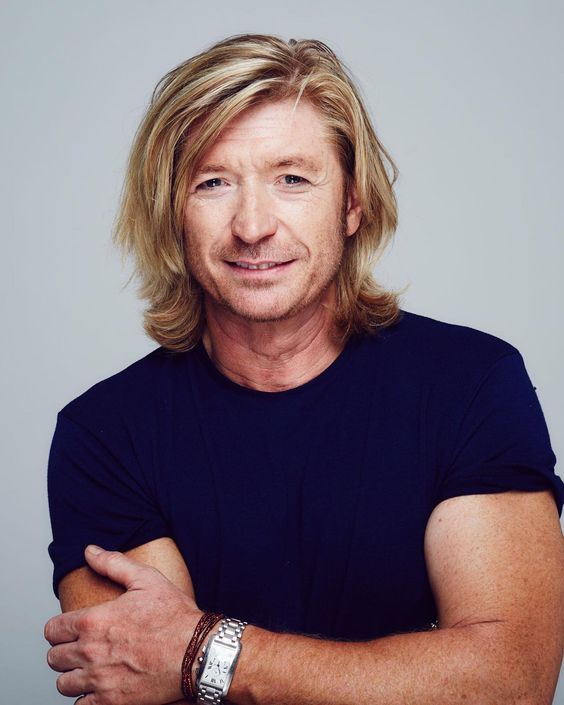
At this point, there’s practically no professional achievement that Clarke hasn’t already crossed off his list. He’s worked in prestigious salons (and even opened his own eponymous space), attracting high-profile clients. He’s received some of the industry’s highest accolades, including the coveted Session Hairdresser of the Year award, and was even bestowed with the Officer of the Most Excellent Order of the British Empire (OBE) by the late Queen Elizabeth II for his significant contributions to the hairdressing industry and outstanding service to the community. And, along with helping Frieda develop the Frizz Ease brand, he also launched his own highly successful haircare and hair tools brand, which has gone on to become a household name in his native U.K.
After years of booming business in his home market, Clarke set his sights on expanding his brand into the U.S. In 2023, he officially launched stateside with the release of the AirStylePRO, an infrared and ionic dryer and styler that’s received much acclaim from industry hair pros.
The Tease had the pleasure of connecting with Clarke to learn more about his illustrious hairstyling career and how he became one of the most famous hairstylists in the U.K. Here, he discusses his beginnings, his favorite memories from working with his celebrity clients, his signature haircutting technique, his brand’s recent U.S. expansion, and so much more. Read on.
The Tease: You’ve been interested in hair from a very young age. How did you first come to the realization that hairstyling is your calling?
Nicky Clarke: Well, we have to go back to when I was a teenager. In 1972, a film with Warren Beatty and Julie Christie came out called Shampoo. It sounds as if it was a little bit of a nonsense film, but I’ve since given it some real credibility. It had more of an influence than people think. As a teenage boy, I was 14 or 15 at the time, and I just wanted to do something that looked a bit glamorous. Back in those days, there wasn’t any kind of information out there. There wasn’t any YouTube or Internet, so I didn’t know one end of a comb from another. I just thought hairstyling looked pretty exciting, and it’s sort of fashion without necessarily being fashion.
I went into it slightly with very innocent eyes. It was kind of great, because I started at 17 years old and was given some really good advice by a hairdresser that used to come to my sister’s house. She said at the time, “Look, go to a really great salon and start at the bottom. You know, sweeping the floors and picking up pins or whatever it may be—just start at the bottom.” And that was really the best advice because I went to a salon, called House of Leonard, that she recommended and it was so cool. At the time, this was like the greatest salon in England that did all the celebrities. It was just luck that I was given that name. I went along to my interview and I didn’t get the job straight away. They sort of went, “Well, it’s very nice to meet you, Nicky. We’ll let you know.” I didn’t want to go for any other interviews because this was the place that I wanted to be. And a month later, they actually did call me, and that was my start.
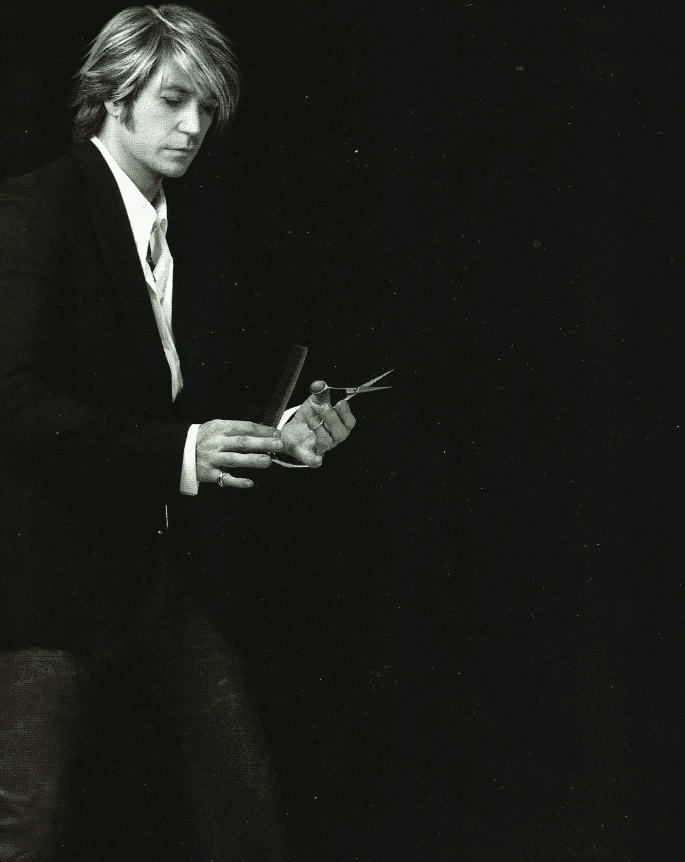
Starting from the age of 17, you spent over a decade working alongside renowned hairstylist John Frieda. How did this opportunity come about and what’s the biggest thing that you learned from all those years working with him?
Clarke: I didn’t know that the salon I was at was going to be this hothouse place. To give you an example, I assisted a guy called John Frieda. You probably don’t know him as anything else other than the brand and Frizz Ease, which we worked on together in the very late ‘80s. But, back in the ‘70s, he was very cool, and a great hairdresser. He was one of the greats, along with a number of other very influential people in our business, like Daniel Galvin and “Keith at Smile,” who did Roxy Music and Bryan Ferry.
John was just one of the great hairdressers. And, of course, I didn’t know it, but he was the guy who was doing Vogue shoots all the time. So my training ground was not only about being in a salon, but also being in a photography studio. And so when people ask me about why I have been so successful, it’s obviously a lot of things, but I put some of it down to the fact that there were very few people who were doing both. There certainly was a period in the ‘80s where it was kind of funny because I spent half my time in New York doing American Vogue while the American hairdressers were being brought over here to do British Vogue.
When I started in the ‘70s working with John, I really cut my teeth on being in the studio. I used to be sent out on all the jobs that he probably didn’t want to do. So I got to work with the great photographers, because very often the great photographers at all the great magazines would rather work with the assistant of a good person than take on somebody completely different.
Tell me about landing your first British Vogue shoot at the age of 17. What do you remember most about that experience and how did your career progress afterwards?
Clarke: In those days, there were no agents. We didn’t have bookers for hair and makeup. It was pretty much that they would ring for the salon and ask for whoever. There would be two or three people that usually went to the studios and it was very much that kind of ad hoc stuff. The job that you are referring to was actually one that I did on my own. I don’t remember whether it was meant to be John Frieda doing it or not, but it was a six-page black and white spread. I was terrified as it was happening. I look back at the pictures now, and they are kind of cool.
After that Vogue spread, there were a couple of other ones. There was one spread that actually had John’s name on it, but I pretty much did it all. But that’s no offense to him. In those days, they told you what was happening. They told you the idea of the shoot, the clothes, and who the models were. You had the opportunity to actually get those models in the salon first and prep. That would never happen nowadays at all. But in those days you could. And this particular thing required a lot of prep. John’s forte, to be fair, was not about being that spontaneous—it was about preparing for things. So that decade really suited me very well.
There was actually another six- or eight-page color spread where we were doing hair pieces and it started off as John and I doing them together. Once he knew that I could do them, he left them to me to do. So it was always that sort of thing. For me, it gave me the opportunity to meet photographers, but also, more importantly, the assistants of those photographers because everybody wanted to do test shots. And in those days, it wasn’t done as a kind of financial game. Everybody just gave their time. The models wanted their pictures as did the hairdressers; we all did it to get pictures. And back then, oftentimes, you could actually do a test shot and have it end up on the cover. I can’t think of any Vogue ones where that happened, but there were certainly a bunch of instances with Harper’s Bazaar. We just did them as test shots, or John did them as test shots, and they would just credit it accordingly. It would never happen like that now. It’s a huge thing now. I just think back on some of the stuff we did and it was a really great training ground, but also a great way to meet people.
The thing about doing a Vogue job at 17 or 18 is that you would think that you would be going upwards from there, but, of course, that didn’t happen. I did a few Vogue spreads, which were almost by mistake, because they were meant for somebody else and I just happened to be around. But once I started doing my own stuff, I had to then start back at the bottom again and just do whatever. I can’t think of what the equivalent would be in the States, but you know, those housewives-type magazines. And you’re trying to do fabulously glamorous hair on things that were probably not necessarily that, but it was really great.
I call the ‘70s my training ground. Even though I was a busy stylist and I got busy really quickly, I think it was my training ground. For me, the ‘80s became the time when I probably did most of my editorial work and spent the majority of my time traveling around the world, whether it be for American Vogue, British Vogue, or Italian Vogue.
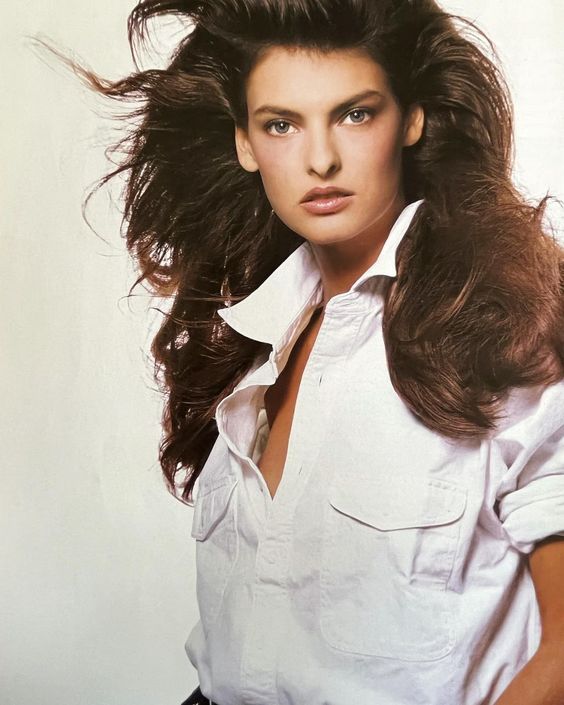
Tell me about how you got into styling hair for celebrities and really started building up your clientele because it spans supermodels like Naomi Campbell and Kate Moss to musicians like Diana Ross and David Bowie to countless actors, and even royalty like Princess Diana. Are there any memorable styling moments that stand out to you when you look back?
Clarke: There are hundreds and hundreds of them and so it’s tricky. I don’t know. I would like to think that some of it was just because I did good hair and I was an okay person to deal with—maybe a safer pair of hands, even when I was young. But I think it’s one of those things where if you do something and if you do it well, then it leads to something else. I look back now and it’s hundreds and hundreds of people and I sometimes wonder, how. But it has to be word of mouth, and it has to be all of the publicity. When I started, I had a number of the supermodels already because I was obviously working with them on shoots. In terms of Naomi Campbell, I’ve known her since she was 17 years old. Cindy Crawford, Linda Evangelista, and that set were the people I worked with regularly, so I suppose that helped.
And then when you’re doing stuff in the salon, you’re seen as being slightly more approachable than somebody who’s on a plane all the time, so maybe that helped. There probably was an element of caricature as well. I mean, I used to have long hair and was wearing leather trousers. There was also an element of the press going, “this is just rock-and-roll.” So I supposed there was a bit of that. But at the same time, I wanted to not be the arrogant person that that was. So the people that were coming into the salon and saving up to spend a lot of money, I wanted to make sure that it was great because they’re trusting you or somebody else who’s paying the bill is trusting you.
I did a number of the royals as well. I remember with Diana, the Princess of Wales, I did her hair a few times. There was a time in the ‘80s where she felt that it was right to wear British designers, so quite often she would come along to the rehearsals for the fashion shows that I was doing. So I got to know her a little bit there. And then my grown up son, who’s 38 years old now, went to the Wetherby School for a year, which was the school that Prince William was at for his last year. So there was a year where we were on the school runs together, so we were kind of on “nodding terms (acquaintances).” And then when I did her hair, I was at Kensington Palace for something. I can’t remember why. But Sarah Ferguson, the Duchess of York very cheekily said, “You know, we’re going out tonight. Can you do my mate’s hair?” And her mate was Princess Diana. So, of course I did her hair. But it was the night of the Pavarotti concert in London’s Hyde Park, and she got drenched. And these images went around the world of her looking fabulous with wet hair.
I think sometimes where the press is concerned, they need things to hang on to. So they had this rock-and-roll sort of hairdresser that had enough names that they could enhance the article. I also had a salon base that looked different to everywhere else because it had VIP rooms and all that sort of stuff. I remember when I did Christian Bale for Batman, we did have a secret entrance. Nobody ever used it, but he used it. He came in and he was still in training. We had to work out the look for Bruce Wayne.
So I had all of those elements that people could talk about and it helped having the mix of supermodels, royalty, and the music business under my belt. Personally, I was the biggest fan of the musicians. Doing David Bowie’s or Brian Ferry’s hair were pinch-me moments, as were some others. I remember with Bowie, I had to just make it out like I was not this huge fan that used to sleep outside his house when I was 14 or 15. I was trying to be really cool, but the reality was I knew his whole back catalog. And the funny thing is that when he used to come into the salon, he would hang out a lot at the reception. He was such a forward thinking artist. You really had to be on your toes.
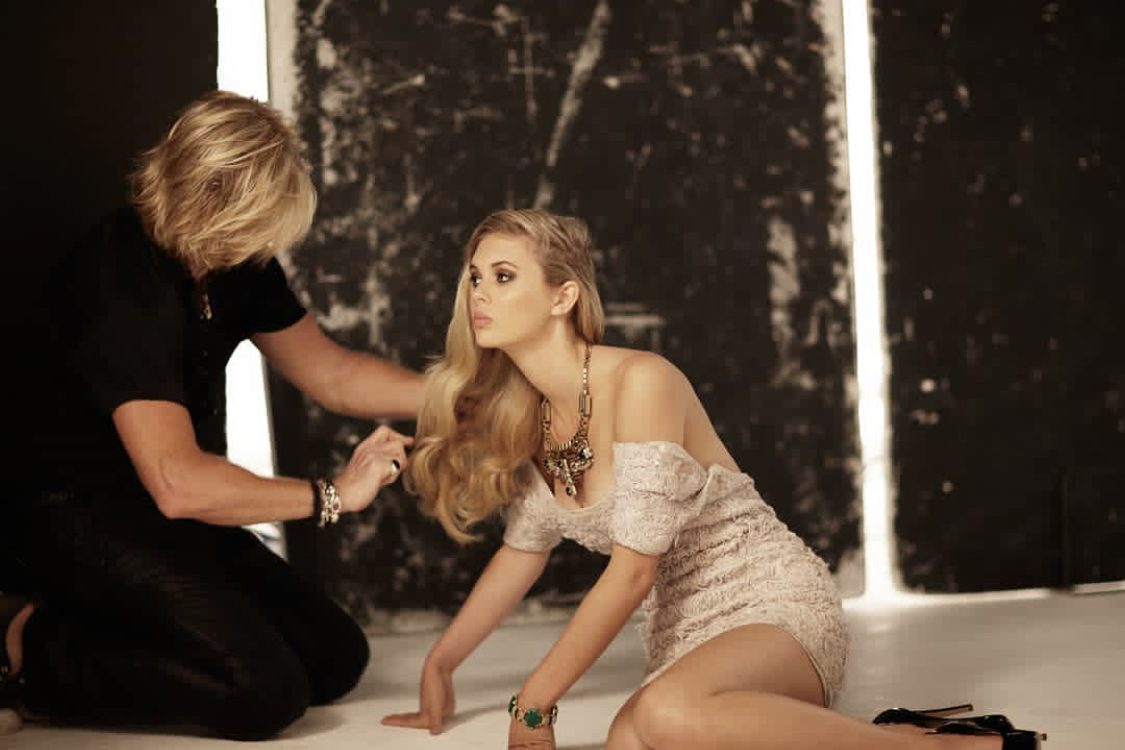
You’re known for your own signature haircutting technique that involves dry cuts and the use of two to three assistants. Can you briefly explain how you approach cutting hair and how you developed this technique?
Clarke: In Britain, there are two dynasties: Vidal Sassoon and Leonard of Mayfair. And they are pretty much at opposite ends. In the very early ‘60s, you had Vidal Sassoon who was very interested in modernism. He had a look that he brought in that really wasn’t about the haircut, but was more about the way it was dressed. He aligned himself with designers like Mary Quant, Paco Rabanne, Pierre Cardin, and André Courreges, who were the modernists of their time. Leonard was the opposite of this because he wanted to cut the hair as he saw how it formed. He did cut hair wet, but it was mostly towel-dried and it was cut as the hair was formed, so it’s quite dry. This was the method that I took on. It’s a much more labor-intensive method because it’s a lot easier to hold clumps of wet hair than it is to be free about it. But the essence of the system was that the sections you take are based on what the head shape is, not about what your haircut is doing.
It’s very difficult to explain this to a non-hairdresser because you are dealing with the same sections. It also doesn’t translate well when you’re trying to teach, you know, Japanese students because they just want you to tell them what the section is that they need to get the haircut. So the Sassoon method is very good for that. The Leonard one confused people because you think that it’s just the same section. Yes, it is the same section, but what you do with it isn’t the same. And I suppose the only way that I can justify it is because my back catalog includes thousands of different looks. So to try and make it look as if it’s the same thing, it is certainly an option.
So, essentially, what I do if I’ve got especially long hair that I’m working with, is I would do what I call my rough sketch when it’s wet. This is a very clean, precise way of me working with the hair. But I’m making allowances because when it’s been rough dried or towel-dried, that’s when I do most of my haircut. We’ve seen different versions over the years and I’m old enough to know different people that apply different methods, but I believe that my way is best. I say this because it allows me to change my mind. It allows me to look at the hair to see how it forms and it also allows the client to see how it’s forming because it’s in the mirror. They can see what it’s doing and I can see if I need to go back to another section. Whereas, with the Sassoon way, I can’t. Once I’ve taken the guideline, I’m stuck to it. So it’s a different method.
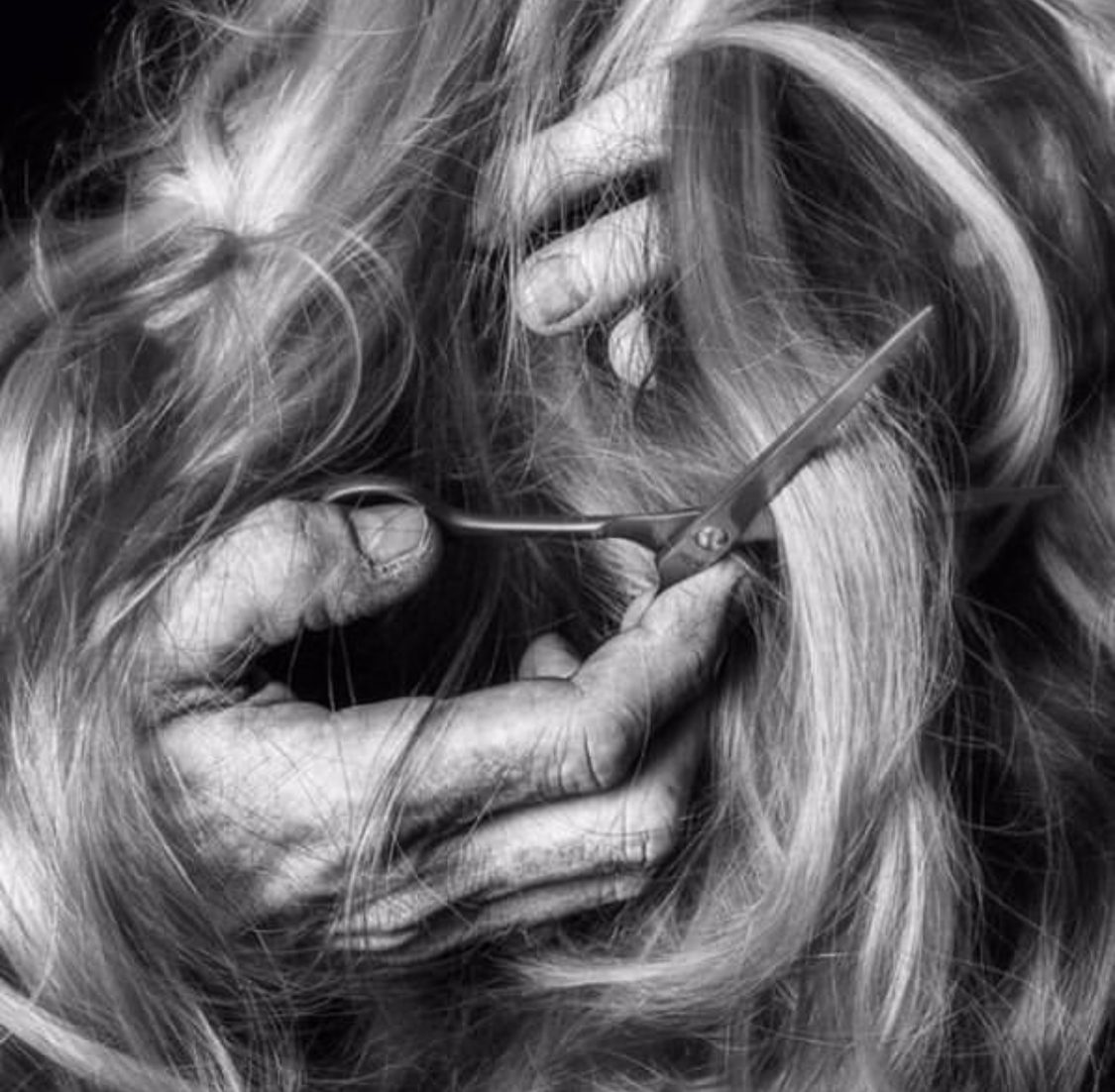
The ‘90s is really when you started to expand your brand beyond your hairstyling work. Tell me about opening your first salon.
Clarke: Through much of the ‘80s, I was mostly doing editorial. I was half in the salon and half in magazines, but it gave me a very clean understanding of some of my contemporaries, like Sam McKnight and Guido Palau. These were two incredible British hairdressers, but they didn’t work in salons. They used to work on runways. And I think in some ways it gave me some kind of an edge with real people. I wanted real people to like what I did. In fact, sometimes, it might have hindered me because I always wanted models to look good or to feel good. I look back now and go, “Maybe I was just being a bit too nice.” I should have just done whatever, but I think that really lended itself to when I opened up my own salon in 1990. It was nuts and the proof was in the print. We were doing 50,000 column inches a year. And these were top pages of The Times and The Financial Times and The Telegraph. It was just mad and I didn’t have a salon yet. I had left John Frieda’s salon slightly under a cloud and I didn’t really know what I was doing. A bunch of people actually left around the time that I did and they said, “Well, we’re coming with you.” I didn’t even know where I was going. But I think that sometimes the stars just align.
We had a ton of publicity and I go back to that Warren Beatty film, Shampoo, because there’s a scene where Warren wants to open up a salon and he goes to the bank manager. The bank manager says, “What have you got in terms of collateral and stuff?” And he said, “I’ve got heads,” which is a cool line. But we did the same thing. We went to the bank and we had no money, but we wanted to open up this fancy salon. My ex-wife and business partner at the time produced this portfolio of unbelievable publicity. There were actually a lot of people saying to me at the time, “What are you doing? You are peaking too soon. You’ve got all of this publicity and you haven’t got a salon yet.” So there was a lot of that going on.
But we eventually opened the salon and we actually had to open it early. It was in December and I happened to be at Buckingham Palace and I was doing the Duchess of York’s hair. I’d known her now for two or three years and so it was a bit of small talk. She asked, “What are you up to?” And I go, “Well, it’s our official opening for the salon.” And she said, “Oh okay, is there anything that I could do?” I said, “You could turn up.” And I didn’t think anything more because I was just there to do her hair and she was obviously going to an event. I left there and went back to the salon and there was such a crowd. I assumed that it was going to be a couple hundred people. We counted on the register and just shy of 800 people turned up. Nobody could really move. At about 7:30 p.m. some flashbulbs started going nuts and the Duchess of York turned up and she said, “I’m here to cut the ribbon.” Thankfully it was December and around Christmas, so I pulled a ribbon off the tree and gave it to her. She asked for scissors, but there was nothing around. So she said something to her bodyguard, who produced a Swiss army knife. If you look back at the pictures that were produced in the paper, it’s her cutting the ribbon with a Swiss army knife. And people would say to me, “Nicky, you’re a genius. You got a member of the Royal Family to open your salon.” And I would tell them, “Do you think I planned this?” It just kind of happened. I mean we had some of my celebrity clients also there at the opening, but that was really the start.
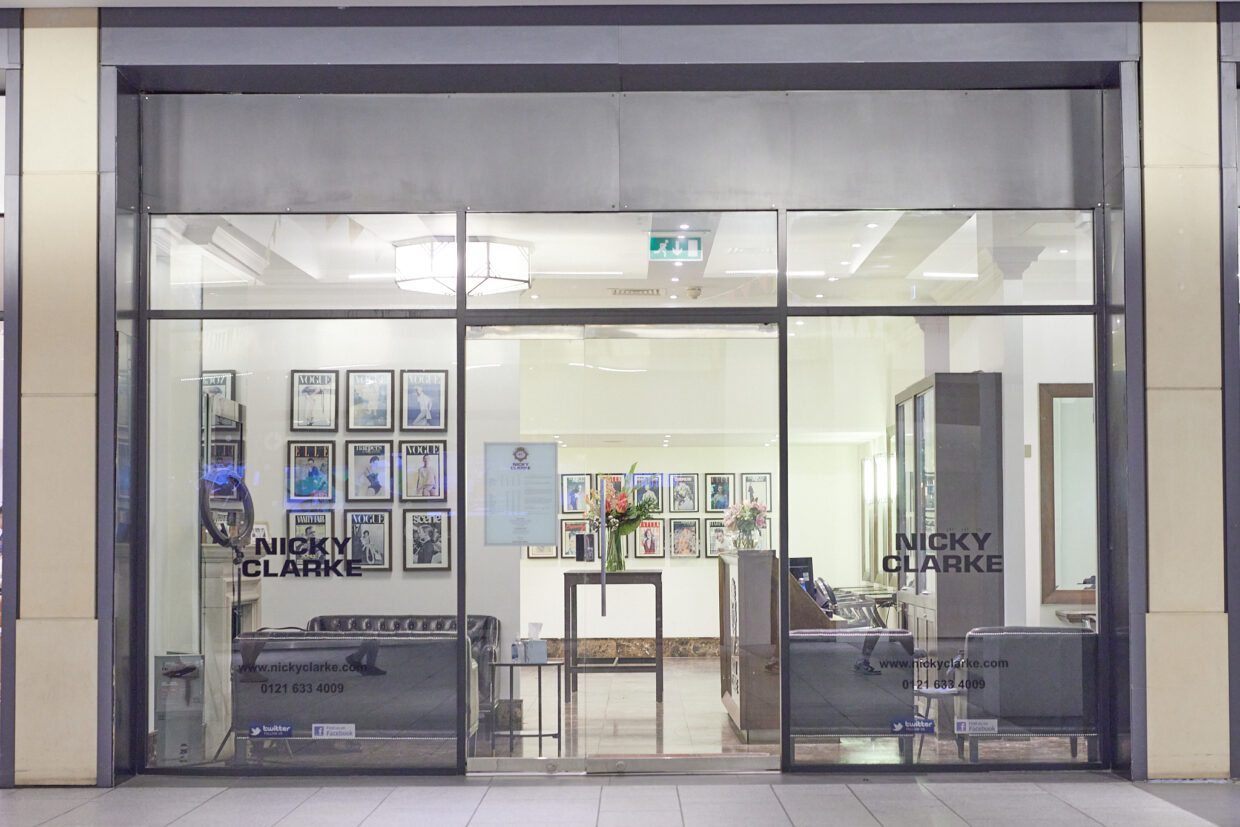
The Nicky Clarke brand also includes a hair care and heated tools line. What inspired you to launch your own product line? Also, what was your original vision for what the line would be when it launched in the ‘90s and how has it evolved over the years?
Clarke: I suppose products were already in my blood. When I opened the first salon, the product range that we had was actually kind of ahead of its time, because I already had that experience. I knew the chemist that we worked with and we also had the idea of putting the product in aluminum bottles, so we were very planet-conscious. What really changed and what’s different was the fact that I was bringing what I believe were editorial-like products to the consumer market. I look back now and it’s possible some of them were a little too effective because we were actually using it. I remember the first store that we were stocked was a big supermarket called Tesco. And nobody did that. Nobody went from doing £500 haircuts to selling £5 boxes of shampoo. It just didn’t make sense, but that’s what we did. And I remember when people would come into the salon, they were quite shocked that we were actually using the stuff. They thought that it was just for the supermarket and that we would use some other stuff, but it was very much that.
And the same thing happened back in 1997, when we started making the electrical tools. It started off as a licensing deal. We had about 10 different people all wanting to do a deal. But there was this young little guy who was very sympathetic to making sure that the deal we had, I signed off on. He was all about trying to do what I wanted to do. And we had always wanted to do something where hairdryers were concerned. One of the biggest things for me was trying to get a proper professional-level product into the consumer market. That probably sounds like the sort of thing that everybody says. But you have to understand, there was a period of time in the ‘80s where if I lost my session bag, I would be screwed completely because I couldn’t replace that stuff without going to a professional store. However, now, I can pretty much replace most of that stuff, at some level, in a consumer drugstore. And that was very much the case with hair dryers and the like, where it was the same stuff all the time. They weren’t anything like the professional-level stuff that we see and know today.
When you think in terms of trying to make something better all the time—whether that be in terms of the speed, the power, the health of the hair, or the weight of it—that in itself is a big thing. And we found that we did really well in the first set of licensing deals. Then it got to the point where some people bought the license from the company and I had no control over it. It was almost like they were forced into dealing with me because they had a very strict contract. And so they just started to breach it all the time. I would see things and go, “Well, I didn’t sign that off.” There would be a lot of that going on or they would make me sign something straight away, and I would go, “But, I haven’t approved this yet.” It was becoming incredibly frustrating. Although we collected a check at the end of the year, that was not my primary reason. My primary reason was to try and build on what we had done and come up with new ideas. It was very clear that I wasn’t really being listened to.
So back in 2016, we just pulled out and took back ownership of our company. And it was a bit of a mess because it was clear that the deals that were being done were not profitable. It took us a little time to get it together, and then COVID happened, which wasn’t great. But I made a decision awhile back to just have the best stuff for the brand. Now, I don’t care what it costs because it’s almost like I want to go back to a time where it wasn’t all about fluffy hair on the covers. And so the first thing we did was an infrared dryer.
The Nicky Clarke brand was already a household name in the U.K. What made you finally decide to bring the brand to the U.S.?
Clarke: I didn’t want to have to fight here in the U.K. because I am a consumer brand here as well. It’s always difficult. People will always tell you that it’s more tricky to try and trade up. You always trade down with your diffusion lines or whatever. But this was me thinking that I have a bit of a gap, where from 2017 onwards, we just wanted to rebrand everything. We didn’t want to do things the way we had done it before. We were still at the mercy of only having a certain amount of control, being that we were a licensee. I had a bit more control than most because I had a pretty watertight—well, it wasn’t that watertight—contract. But, I just got really fed up. I wanted to be able to do more stuff because I had so many great ideas. So I think that’s really what led to it.
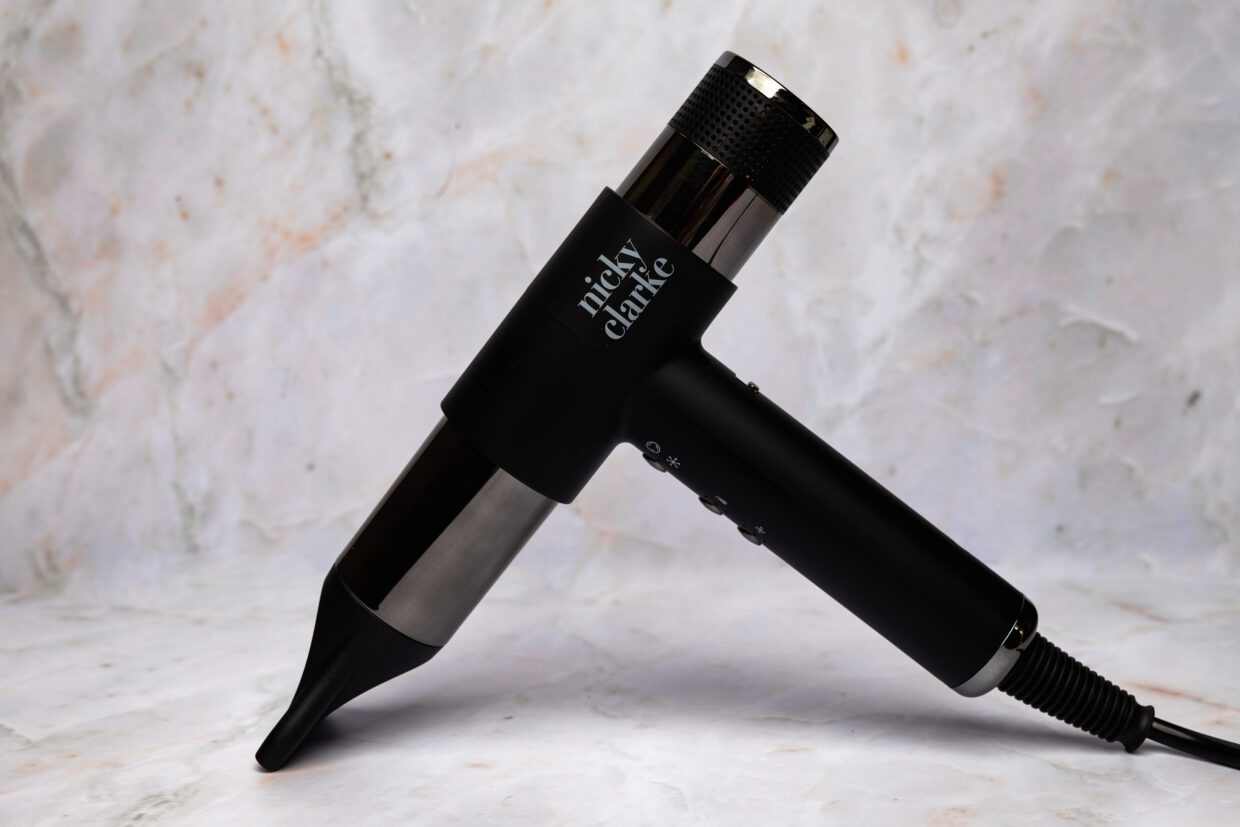
The Nicky Clarke brand debuted in the U.S. last November with the release of the AirStyle PRO on SalonCentric’s website. Why was this dryer the perfect first product to launch with and introduce U.S. salon professionals to the brand?
Clarke: I’ve straddled the two camps of professional hairdressing. I’ve said it before, but I was doing £500 haircuts and having my brand in the supermarkets. And I think that if you do that for a long time, there are times when the trade can be a little sniffy about some of the stuff and they don’t see you as necessarily being a professional brand. So I think it was a conscious decision that I wanted this to look like a proper hairdresser’s brand. I think in America we took that one stage further and we decided that we aren’t selling this to anybody else. I want the hairdressers to go, “I love this,” and then hopefully the trickle down, which is what’s been happening, will come from that.
The reason that we decided to launch with the AirStyle PRO was, I think, just circumstances. I’m glad it was the dryer because it is infrared. The dryer that we had before still sells really well, but it’s only got infrared. And although it is a lightweight dryer, it isn’t like the AirStyle PRO. It’s still in the old style of those bigger dryers. And I’m probably shooting myself in the foot here, but I’ve said recently that I believe in five years time, all dryers will look like this. You’ll look at an old, big dryer and go, “Why would I want to use that? It weighs a ton.” But really, I think the AirStyle PRO just really ticked all of the boxes.
It’s now coming up on almost a year since you’ve launched your Nicky Clarke brand in the U.S. What has been the biggest challenge that you’ve faced with growing the brand’s presence stateside?
Clarke: You’re not going to believe this but our biggest issue at the moment is actually cash flow. When you launch something in a territory that you don’t know, especially as big as America, everything you do, in terms of how much you order, is all based on intelligent guesswork. And what we hadn’t planned for is the massive increase in demand for the dryer. So when you start with ordering hundreds of things and thousands of things, that’s where the problems begin, because suddenly you’ve got so many different territories that want things and want to be able to take it. And the margins are quite good for them as well.
I would also add that a big challenge has been keeping the AirStyle PRO in stock! We’ve sold out four times since the launch in November, last year. The first launch batch sold out in less than two weeks on SalonCentric’s website. There’s been a waiting list from salons to get the product in for themselves and their clients.
You’ve already done so much in your career thus far. What goals do you still hope to accomplish?
Clarke: I would love the brand to be successful in the States. I don’t know why. I sort of lived in New York—well, actually I didn’t technically live in New York. I had an apartment there and I commuted for about a year. But I’ve always felt that it’s slightly like my second home, so I suppose that drives me. I think it’s also that love of hairdressing. I work every day and I feel blessed. I’m somebody who came from the wrong side of the tracks and to have this success and be recognized by the Queen of England for it, is wonderful. I just see this as another chapter and another decade for me. And each of my decades have had their real specialness. And so, I think for me, I just want to see that success.
I would also like to incorporate some education, in terms of my cutting method and house style. I don’t know how confident I am in getting some of that across.You can only get things across sometimes if your back catalog stands up to it. And so from that point of view, yes, but I don’t want to spread myself too thin. For me, at this moment, our Nicky Clarke Electricals are really where a lot of my focus is. But I also have so many clients now that I couldn’t not be a part of that as well. I’m sort of back doing some stuff for the trade in my country too.
This interview has been edited for length and clarity.
For all things Nicky Clarke, be sure to visit nickyclarke.us or follow @nickyclarkeus on Instagram.
